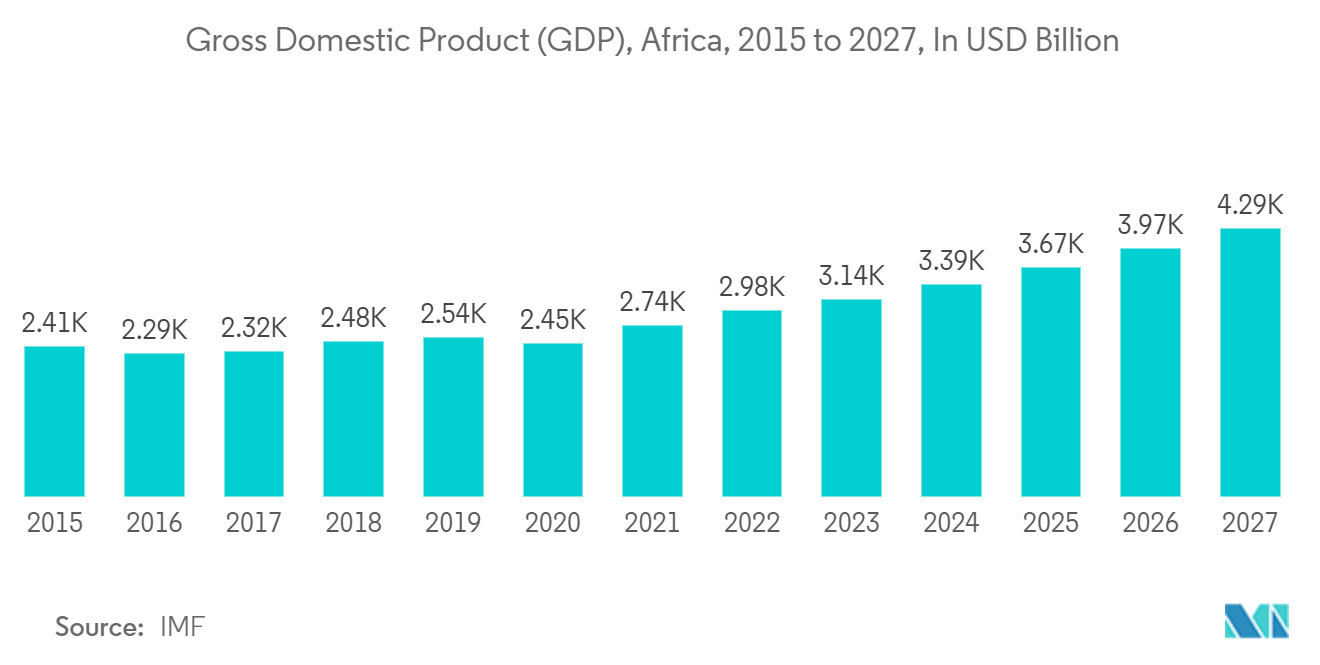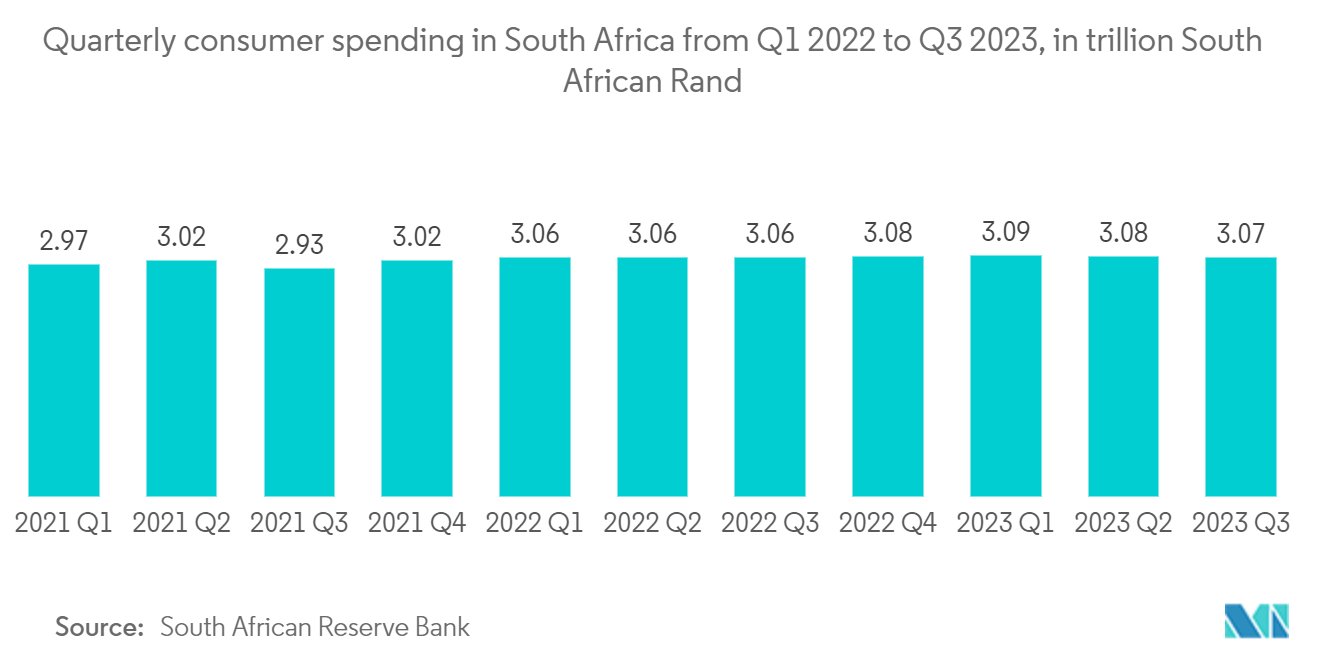Market Trends of Africa Flexible Packaging Industry
The Pouches Segment is Expected to Hold Significant Market Share
- Pouch packaging is becoming the go-to choice for its unmatched convenience and portability. Stand-up pouches shield their contents from moisture, vapor, odors, pests, air, and light. Additionally, consumers are drawn to the aesthetic appeal and added conveniences of these pouches, such as spouts, zippers, and handles. These preferences are driving the popularity of stand-up pouches. Stand-up pouches, being lighter and using less material, also offer food producers a cost advantage in shipping compared to traditional rigid packaging. As the beverage industry in the region increasingly adopts pouches, market demand is poised for growth.
- Rigid containers consume more fossil fuels than flexible stand-up pouches equipped with zippers. Notably, these containers are six times heavier than their flexible counterparts. Additionally, the diverse printing options for these pouches enable innovative designs, enhancing the product's aesthetic appeal and reinforcing brand identity. Furthermore, rising innovations have introduced flexible foams, papers, and aluminum foils, marking a shift from traditional plastic raw materials in pouch manufacturing.
- Innovations are driving the shift from plastics to flexible foams, papers, and aluminum foils in pouch manufacturing. Additionally, African nations are ramping up local production, bolstered by rising investments from Asia and Europe. Consequently, foreign entities like Lupin and Dr. Reddy's are poised to enhance their production capacities. This trend is set to elevate the demand for healthcare packaging, encompassing pouches in Africa.
- The growing preference for pouch packaging in liquids like juices, detergents, and edible oils has spurred innovations in pouches with enhanced oxygen-barrier properties. These improvements are crucial in preserving and protecting the liquid contents from contamination. Furthermore, collaborations among stakeholders to develop recyclable flexible pouches while ensuring they retain their vital functionalities are bolstering market growth.
- Africa recorded a significant position on the list of the world's 20 fastest-growing economies in 2024. This growth can be attributed to the continent's policymakers, who have been diligently steering strategies toward economic diversification, particularly by channeling investments into pivotal growth sectors. Furthermore, the IMF highlighted a consistent upward trajectory in the region's GDP, showing robust support for its production and manufacturing landscape and an anticipated surge in demand for flexible packaging.

South Africa is Expected to Hold Major Market Share
- South Africa boasts a sophisticated food manufacturing industry and a high consumer market. The nation grapples with sluggish domestic economic growth. Manufacturers are challenged to control production costs while consistently meeting steady consumer demand. There is potential for increased investment in enhanced packaging solutions, which could boost efficiencies and aid in managing expenses.
- Moreover, South African food manufacturers are targeting the export market. They are expected to emphasize flexible packaging that ensures product consistency and quality, aligning with global food standards. The South African government also prioritizes the food and beverages industry as the most significant component of its manufacturing sector. It actively encourages the further development of agriculture and the agro-processing industry, which may support market growth in South Africa.
- Beauty product packaging increasingly relies on flexible plastic packages, which safeguard contents from oxidation and extend shelf life. South Africa's cosmetics industry grapples with hurdles from the nation's economic downturn. The GDP growth has notably decelerated, and challenges mount with high unemployment rates and dwindling disposable income. As a result, the personal care segment anticipates a deceleration in growth in the market studied.
- The South African Reserve Bank reported that quarterly consumer spending in South Africa has been following a growth trajectory, which supports the demand for flexible packaging in line with the growth of e-commerce and the retail landscape in the country.
- South Africa's economic growth and urbanization have surged access to processed and fast food. This shift is notably evident in urban centers, especially among the youth aged 12 to 24. Their evolving consumption patterns are driving the demand for ready-to-eat meals, beverages, and on-the-go food items, increasing the need for flexible packaging solutions, including bag- and pouch-based options.


